High school girls are coming out of a ‘wave of sadness’ after a pandemic spike of feeling hopeless
The latest data shows mental health issues are not ‘insurmountable,’ said CDC division of adolescent and school health director

High school girls are emerging from a wave of sadness, according to a leading public health agency.
The Centers for Disease Control and Prevention’s latest report shows improvements in almost every category of its mental health focus areas, including suicide and feeling sadness or hopelessness.
Looking at data collected in 2023, the most significant change between 2023 and 2021 was in the percentage of female high school students who “experienced persistent feelings of sadness or hopelessness” during the past year.
In 2021, that number was recorded to be 57 per cent of girls in high school, which using figures from Women in Academia meant that nearly five million high school girls felt this way.
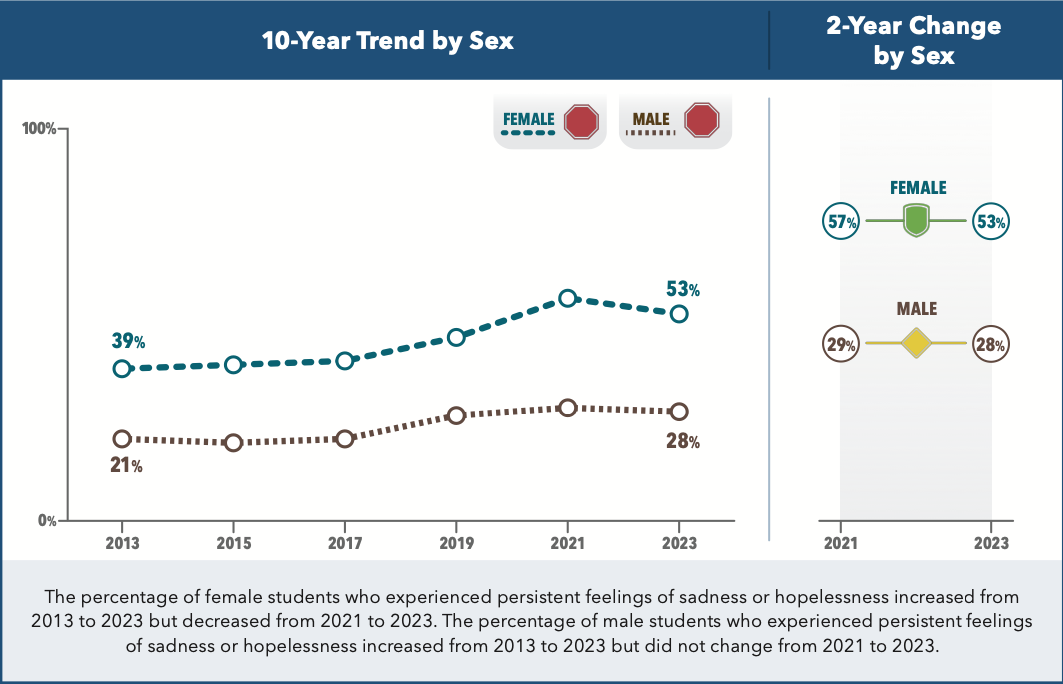
The latest report, released Tuesday, shows that number has dropped to 53 per cent, meaning hundreds of thousands of girls experienced an improvement in their mental health over the past two years.
The Youth Risk Behaviour survey tracks trends and changes in the health behaviours and experiences of high school students.
In a press statement released with the survey, CDC division of adolescent and school health director Kathleen Ethier said the new data shows the organisation has “made some progress in tackling these issues in recent years, which proves that they are not insurmountable.”
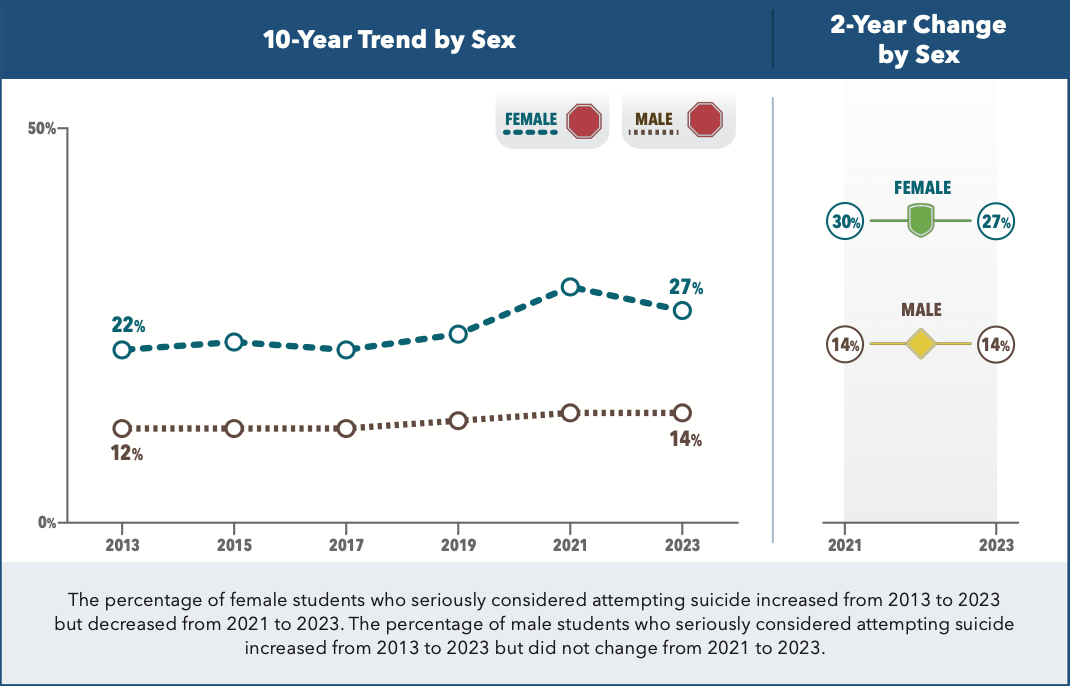
According to the survey, high school boys did not experience as much of an improvement as their female counterparts, with the figures dropping by just 1 per cent in three of the areas, and remaining at the same level in two.
The number of male high school students who seriously considered ending their own life actually increased between 2021 and 2023, from 18 per cent to 19 per cent.
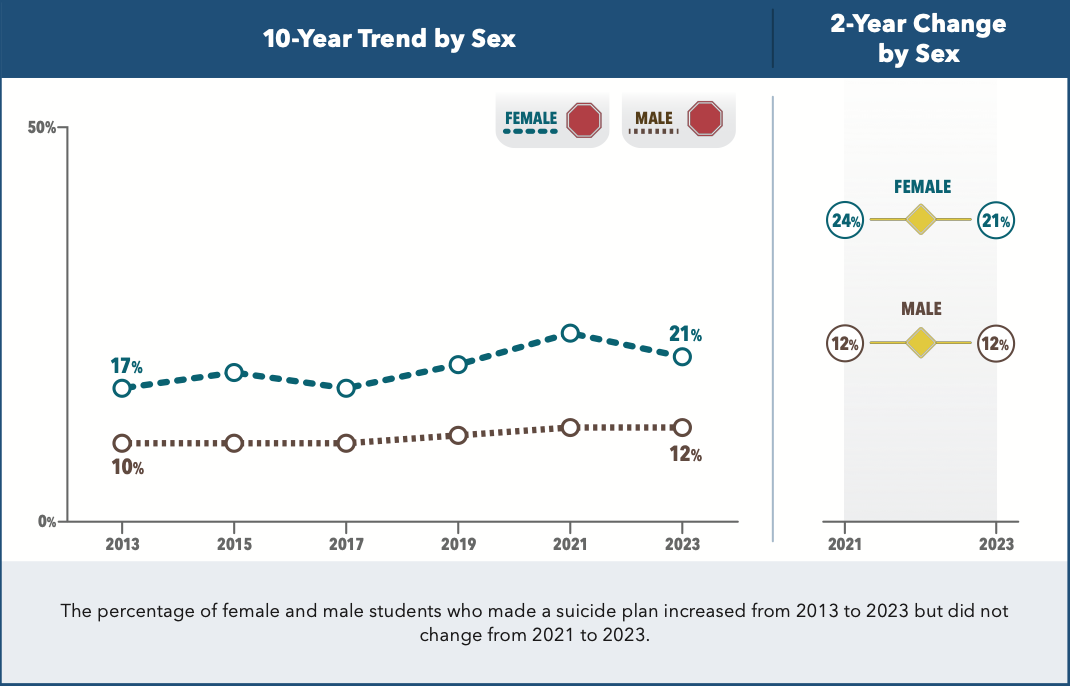
Girls are also less likely to consider attempting suicide. In 2023, 27 per cent of high school girls admitted to “seriously considering” ending their lives, compared to 30 per cent in 2021.
The same can be said for the number of girls actively making plans to take their own lives, which also reduced by 3 per cent over the two-year period of the survey – from 24 per cent in 2021 to 21 per cent in 2023.
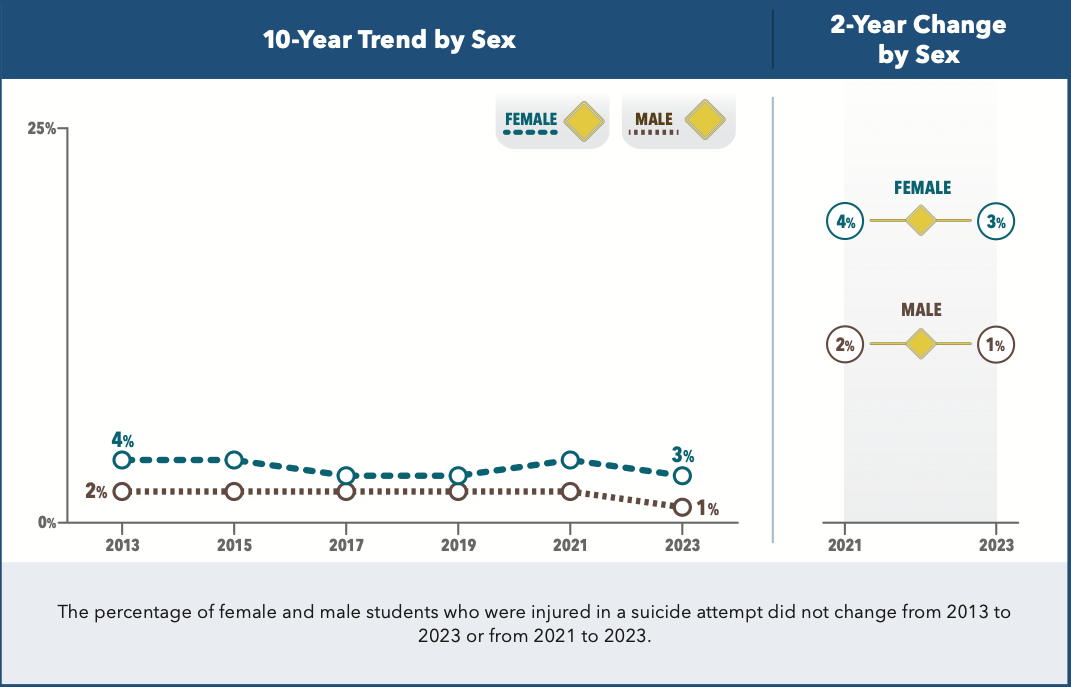
Additionally, the number of girls experiencing poor mental health in the 30 days leading up to the survey decreased by 2 per cent, to 39 per cent, and 3 per cent of girls were injured in suicide attempts during the past year – a drop of 1 per cent compared to 2021.
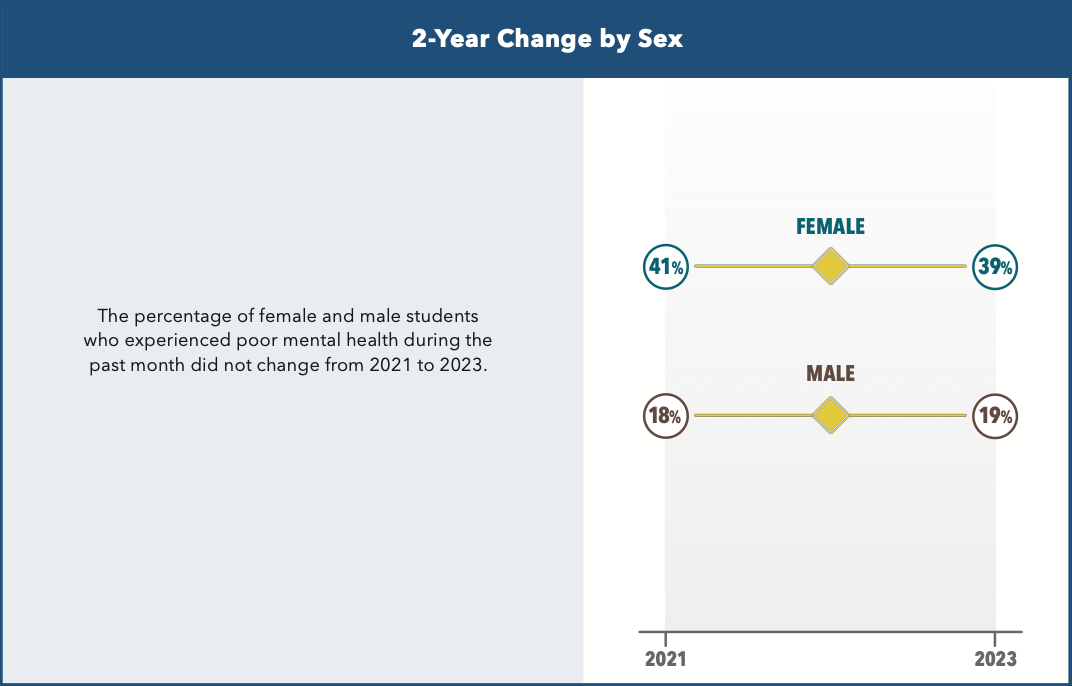

The only area with no improvement was the number of high school girls who attempted suicide in the past year, which remained at 13 per cent.
However, Dr Ethier said that “there’s still much work ahead” given that none of the figures are lower than they were a decade ago.
The only areas which did not see an increase between 2013 and 2023 were the number of female high school students injured in suicide attempts in the year before taking the survey and the number of girls who reported experiencing poor mental health in the month leading up to it. These categories remained at the same level.
According to the CDC, the decreases between 2021 and 2023 were likely due to figures spiking during the Covid-19 pandemic. In 2021 the pandemic’s socio-economic impact was still being keenly felt, affecting mental health on a global scale.
Join our commenting forum
Join thought-provoking conversations, follow other Independent readers and see their replies
Comments
Bookmark popover
Removed from bookmarks